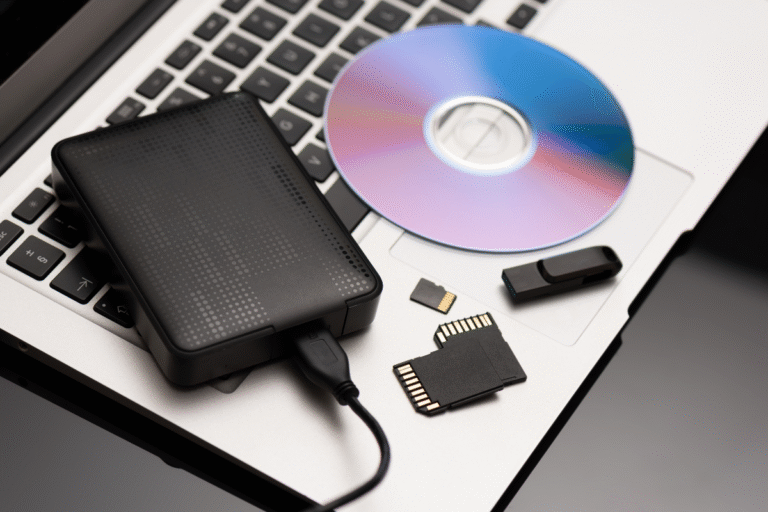The data driven and fast paced world that we live in today is dependent upon the various Memory Storage Devices that have revolutionized the way we store, access and mange data. They have the magic behind uninterrupted digital interactions, which impart incredible ease, flexibility, and security
What are Memory Storage Devices? Fascinating Takeaways about Data Management Hidden In Them
Memory chips are one of the key components of digital storage and play a vital role in ensuring users have access to the content they value most. They evolved further, changing the way we interact with information and news every day.
- Key Features: Be it file storage or software upkeep, these devices are involved head-on with technical advancement.
- Portability Alternative: Smaller devices allow access on the go which is useful in greater flexibility for users.
- Reliability: Early storage devices were prone to failure, whereas new ones use encryption to maintain data integrity.
These characteristics emphasize the basic significance of memory storage devices in the present-day computerized scene.
Types of Memory Storage Devices The Various Memory Storage Devices and Their Uses
Explore memory storage devices at a glance, each providing different features for different applications and environments. Serving a variety of different use cases, these devices offer a balance between efficiency and performance.
- Hard disk drives (HDD): Great for large storage, providing a high capacity for a lower price.
- Solid State Drives (SSD): Faster and sturdier than traditional spinning disks, these are the new backbone of modern computers.
- USB Flash Drives: As space-saving portable devices, they are also handy for quick data relocation.
Non-Movable Storage: What are optical disks? What are the types of optical disks?
Cloud Storage: Offers the convenience of remote access to files and scalable storage, which why it’s a popular choice among businesses and individuals.
Different kinds of devices offer unique benefits, enabling users to choose the ideal device according to their needs.
Pros of Memory Storage Devices: How They Make Life Easy
From data management to usability, security, and functionality, memory storage devices provide more than just handling advantages. These functions are key components of making all types of digital engagement more efficient.
- Access: You can access data most anytime, anywhere.
- Security: Encryption is built into the architecture to protect sensitive data.
- Space Efficiency: Saves from heavy physical storage requirements
- Affordable Solutions: Cost-Effectiveness for Individuals and Companies
These advantages explain need for memory storage devices in day to day life and in work life as well.
Secondary Vs. Primary Storage with Real-World Examples
Understand the difference between primary and secondary memory storage devices and how they assist your computer to work well and live longer.
- Primary storage: This includes mutable storage like RAM, employed in splitting the data-sequencing data for the continuing task.
- Secondary Storage: Hard Disk Drives (HDD), Solid-State Drives (SSD), none volume devices that provide persistent data used for permanent storage.
It gives users an inside look at them so they can pick devices to suit their needs.
Common Use of Digital Memory Storage Devices
Storage of memory is not limited to technical areas — it’s used in our daily life and helps things work better and faster.
- Educational Tools: Devices assist in saving e-books, research papers and presentations for students and teachers.
- Personal Use: From family pictures to important documents, it backs up memories and data.
- Professional Environments: These devices are used by organizations for the secure and organized management of sensitive data.
Memory storage devices prove useful in day-to-day lives making it the versatile of its kind.
Factors to Consider When Choosing the Right Storage Devices for Your Memory
Choosing the best memory storage devices involves considering multiple factors to adapt user needs and budgets.
- Storage Needs: Determine the needs for storing data of different volumes.
- Speed: Identify use cases where fast access to data is required.
- Durability: Seek out sturdy constructions that can resist environmental conditions.
- Interoperability: Verify that it works with current systems and technologies.
These considerations lead to more informed decisions.
Innovations to Watch: The Future of Memory Storage Devices
Emerging memory storage devices are set to redefine data storage, altering the way we store and retrieve information. Examples of emerging technologies include:
- Quantum Storage: Better speed and capacity.
- Eco-Friendly Solutions: Emphasizing on sustainability and energy efficiency.
- Artificial Intelligence: Improves predictive data administration and structuring.
Such innovations keep memory storage devices central to the ongoing evolution of technology.
Conclusion
More than just tools, memory storage devices facilitate efficiency and secure data management, driving digital advancement. From layers within types of memory storage devices to harnessing their advantages, they are crucial components in our interwoven universe. These units are at the forefront of technical evolution, and as innovations are laid upon the familiar design, they reshape our experiences, bridging gaps between innovation and actuality.



